Study mushroom growing with our experienced tutors and learn about mushroom production, harvesting, marketing and storage
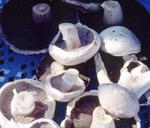
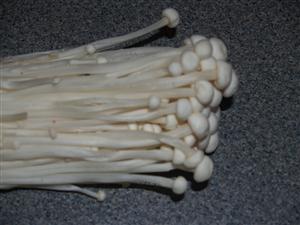

Who is this Course For?
-
The passionate home gardener or gourmet "foodie"; through to anyone starting, running or working on a mushroom farm.
-
Past students have included chefs, farm workers, students of horticulture and gardening; businessmen, staff from mushroom farms, and others.
What is covered?
-
Emphasis is placed on the Champignon (Agaricus spp).
-
Other commercially important edible fungi are also considered though.
-
Growing, harvesting, marketing, storage, pest and diseases and even ways of cooking and using mushrooms are covered.
ACS Offer
-
Exceptional tutor support - our horticulture faculty includes a dozen university trained professionals most with decades of industry experience.
-
You have unlimited access to tutors over the phone or email.
Course Structure and Content
Course Duration: 100 hours.
Start Date: Start at any time - study at a pace that suits you, and with full tutor support for the duration of your studies.
Lessons: The course comprises 8 lessons as detailed, below.
1. Introduction
-
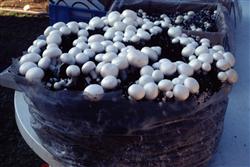 How Fungi are Named: Review of the system of plant identification.
How Fungi are Named: Review of the system of plant identification.
-
Characteristics of all Fungi.
-
Three Fungi Kingdoms: Zygomycota, Basidiomycota and Ascomycota.
-
Agaricus campestris and Agaricus bisporus.
-
Review of significant edible fungi including; Coprinus fimetaris, Flammulina velutipes, Letinus erodes, Pleurotus, Stropharia, Volvariella,Auricularia auricula.
-
Synonymous Names.
-
Distinguishing edible fungi, Mushroom structure, tell tale characteristics of the genus Agaricus, etc.
-
History of Mushroom Cultivation.
-
Commonly Cultivated Edible Fungi.
-
Agaricus bisporus, Agaricus bitorquis.
-
Coprinus fimetarius.
-
Flammulina velutipes.
-
Kuehneromyces mutabilis.
-
Lentinus edodes Shiitake.
-
Pholiota nameko.
-
Pleurotus spp "Oyster Mushroom".
-
Stropharia rugosa annulata.
-
Volvariella volvaceae Edible Straw Mushroom.
-
Auricularia spp.
-
Tremella fuciformis.
-
Tuber spp.
-
Tricholoma matsutake.
-
Ganoderma lucidum (Reishi).
-
Grifola frondosa (Hen of the woods, Maitake).
-
Resources, information/contacts.
2. Mushroom Culture
-
Options for obtaining Spawn.
-
Steps in Growing Agaricus species: Preparation, spawning, casing, harvest.
-
What to Grow Mushrooms in; growing medium.
-
Growing media for different edible fungi: Agaricus, Auricularia, Copreinus, Flammulina, Letinus, Pleurotus, Volvariella, etc · Understanding Soil and Compost, components and characteristics.
-
Acidity and Alkalinity .
-
Making Compost.
-
Making Mushroom Compost, and mushroom compost formulations.
-
Moisture Level in Compost.
-
Cultivation of Agaricus bitorquis.
-
Cultivation of Coprinus fimetarius.
3. Spawn Production and Spawning
-
Finding Spawn Supplies.
-
Overview of Spawn and Spawning.
-
Obtaining Smaller Quantities of Spawn.
-
The Process of Spawning.
-
Spawn Production; typical rye grain method.
-
Storing spawn.
-
Problems with Spawn.
-
Using Spawn.
-
Comparing temperature conditions for spawning and fruiting in most commonly cultivated edible mushroom species.
-
Cultivation of Pleurotus.
-
Cultivation of Stropharia.
4 Making and Casing Beds
-
Growing Methods; Caves, bags, houses, outdoor ridge beds, troughs, etc.
-
Casing; biological process, characteristics of casing material, procedure.
-
Techniques; spawned casing, ruffling, scratching.
-
Review Auricularia and Volvariella.
5 Growing Conditions for Mushrooms
-
Fungi Nutrition: carbon, nitrogen, essential elements, vitamins and growth factors.
-
Casing to Harvest of Agaricus.
-
Growing Indoors.
-
Components of a Built System and Determining Your Needs.
-
Factors Influencing Fungal Growth.
-
Environmental Control, equipment to measure and control the environment.
-
Siting a Growing House.
-
Managing the Growing House or Room, cleanliness, heating, cooling, humidity, etc.
-
Review of Tuber (Truffle) and Tremella.
6. Pests, Diseases and Growing Mushrooms Outside
-
Overview of Pests, Diseases and Environmental Disorders.
-
Prevention of Problems.
-
Review of Bacterial and Fungal Diseases and their Control.
-
Review of Insect Pests, Mites, Nematodes and their Control.
-
Weed Moulds.
-
Safe, Natural Sprays.
-
Summary of Problems found on Agaricus bisporus and other edible fungi covered in this course.
-
Cultivation of Flammulina velutipes and Kuehneromyces mutabilis.
7. Harvesting, Storing and Using Mushrooms
-
Harvesting Buttons, Cups and Flats on Agaricus bisporus.
-
Fruiting patterns for Agaricus bisporus and other edible mushrooms.
-
Cool Storage of Mushrooms.
-
Freezing Mushrooms.
-
Dry Freezing Mushrooms.
-
Drying Mushrooms.
-
Canning Mushrooms.
-
Harvesting Agaricus; method of picking.
-
Handling Agaricus after harvest.
-
Controlled Atmosphere Storage.
-
Cultivation of Letinus (Shitake), Pholiota, Tricholoma.
8. Marketing of Mushrooms and Special Assignment
-
Review of Marketing options for mushrooms.
-
Fresh Mushroom Sales.
-
Processed Mushroom Sales.
-
Production and Marketing of Shitake, Oyster Mushroom and Straw Mushroom.
-
Research and Determination of Marketing Opportunities and Strategies in Your Region.
Each lesson culminates in an assignment which is submitted to the school, marked by the school's tutors and returned to you with any relevant suggestions, comments, and if necessary, extra reading.
Course Aims
On successful completion of the course you should be able to do the following:
-
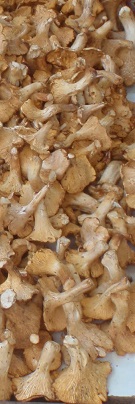 Classify different varieties of fungi which are commonly eaten.
Classify different varieties of fungi which are commonly eaten.
-
Determine the techniques used in the culture of edible mushrooms.
-
Explain the harvesting of a mushroom crop.
-
Explain the post-harvest treatment of a mushroom crop.
-
Explain marketing strategies for mushrooms.
What You Will Do In This Course
Here are just some of things you may be doing:
-
Compare the scientific with common definitions for a “Mushroom”.
-
Explain the classification, to genus level, of ten different commercially grown edible fungi.
-
Produce a labelled illustration of the morphological characteristics which are common to different edible fungi of the genus “Agaricus”.
-
Compare the physical characteristics of different commercially cultivated edible fungi.
-
Distinguish edible Agaricus mushrooms from similar, inedible fungal fruiting bodies.
-
Compile a resource file of sources of information regarding edible fungi, including: Publications, suppliers, industry associations/services.
-
Determine the preferred conditions for growing two different specified mushroom genra.
-
Describe the stages in the growing of Agaricus mushrooms.
-
Develop criteria for selecting growing media, for different genra of edible fungi, including Agaricus.
-
Describe an appropriate compost for growing of Agaricus bisporus.
-
Explain how spawn is produced for different genra of edible fungi.
-
Explain the use of casing in mushroom production.
-
Compare different methods of growing edible fungi, in your country, including where appropriate: Outdoor beds, in Caves, in buildings, in trays, in bags, and in troughs.
-
Describe different pests and diseases of mushrooms.
-
Describe appropriate control methods for different pests and diseases of mushrooms.
-
Analyse hygiene and exclusion regimes used in mushroom production.
-
Prepare a production plan, based on supplied specifications, for Agaricus bisporus, including: Materials required, equipment required, work schedule, cost estimates.
-
Grow a crop of Agaricus bisporus.
-
Identify the stages at which Agaricus mushrooms can be harvested.
-
Explain how mushrooms are harvested.
-
Develop guidelines to minimise damage to two different types (i.e. genra) of mushrooms during and immediately after harvest.
-
Describe ways to extend the shelf life of two different mushrooms crops.
-
Explain different techniques for processing mushrooms.
-
Produce dried mushrooms from fresh ones.
-
Analyse industry guidelines for the post-harvest handling of a specified mushroom variety.
-
Determine the different ways mushrooms are packed for retailing.
-
Outline industry generic marketing strategies for mushrooms.
-
Suggest strategies for marketing a separately identified mushroom product (e.g. branded, regional).
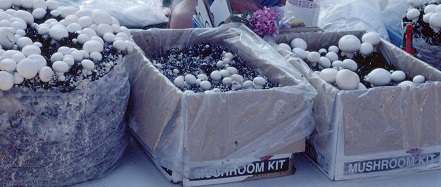
Pest and Disease Control
Prevention is the best way of controlling pests and diseases in mushrooms. It is absolutely essential to keep your property clean, use clean tools and equipment, clean compost, and pure, uncontaminated spore from a reliable source. If any sign of a pest or disease appears, it should be controlled immediately, as all too often, the conditions which are ideal for mushroom growth are the same conditions which are ideal for rapid spread of the pest or disease problem.
Commercial mushrooms growers cannot depend on chemical pesticides as the crop is extremely sensitive and diseases have shown tolerance to common used chemicals. Organic regulations in general do not allow chemicals to be used at all. Also, for home growers, chemicals are best avoided due to health considerations (short and long term consequences).
What Problems Happen?
Most of the main problems are discussed in the course; both what they appear like and how you should respond. Sometimes a fungicide or insecticide can be an option; depending on the problem, the stage of growth, and even government regulations in your country. Often though, the best and recommended treatment may be to simply clean up any infected plants and contain any spread of the problem.
Consider mildew, for example.
Mildew in mushrooms is a fungus called Cladobotryum, which causes a "cotton wool" like growth over the mushroom stalk and cap, spreading over the surface of the casing. Infected mushrooms died by turning soft and rotting. The disease can be carried through the air or may infect through casing material.
Another fungi species, Dactylium, can cause cobweb-like mildew, with white to pink fluffy mould.
Good hygiene and disinfection of the casing material prior to infection are the only controls, prevention is the only way. Infected mushrooms should be destroyed and the area sterilized.
What Mushrooms are Covered by the Course?
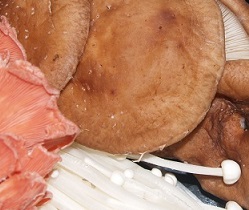
Learn about mushroom culture and production with an online course from ACS Distance Education. Mushrooms that are covered to varying degrees in this course include the following, and more:
Agaricus bisporus (also known as the “Champignon”)
This is by far the most commonly grown mushroom world wide; and as such the course focuses heavily on this species. It is known in some areas, by other species names. Agaricus brunnescens is a former name for A. bisporus, and some references may still use this name. Agaricus hortensis is a synonym that is applied to pure white forms of A. bisporus.
The species "Agaricus bitorquis", has some characteristics which make it more desirable than Agaricus bisporus (ie: longer shelf life, virus resistance and resists bruising). These characteristics have led to the species Agaricus bitorquis being used in breeding programs aimed at producing crops more suited to the fresh market.
Coprinus Fimetarius
Suited to freezing, canning and drying. It has excellent flavour and potential as a novelty vegetable. Whilst many species of Coprinus are highly ephemeral (they have an extremely short shelf life), C. fimentarius has the potential as a cultivated mushroom. It is easy to grow and can quickly produce good commercial yields.
Flammulina velutipes
This fungus is commonly known by names such as ‘Winter Mushroom’, ‘Velvet Stem’ and ‘Velvet Foot’. Cultivated Japanese varieties are known as Enoki and Enokitake, but bear little resemblance to wild populations. Whereas wild ones are dark in colour, the cultivated Japanese varieties are grown in low-light conditions and have pale flesh and skin.
This mushroom fruits in cold conditions. Fruiting bodies are small, but delicious. This mushroom has been eaten for centuries in parts of Asia. It grows naturally on wood and can be cultivated on sawdust.
Lentinus edodes
This is the Shiitake mushroom, is the most important cultivated mushroom in Japan. It is grown on logs of Fagaceae trees (eg: Oaks) and various other trees. The shiitake mushroom is said to possess many health benefits, including the presence of many polysaccharides and polysaccharide-protein complexes that have been isolated and utilised for therapeutic purposes (it has been reported as promoting health due to immunity stimulating properties against cancer, viral infection and high cholesterol). This mushroom is usually sold fresh or dried. There is potential for commercial shiitake mushroom cultivation, although many markets have high quality standards that must be met.
Pleurotus ostreatus
This and several other species of this genus are edible and have the potential for cultivation commercially. Pleurotus ostreatus is perhaps the most commonly cultivated species, known as the oyster mushroom, due to its appearance. The oyster mushroom naturally grows on dead wood, but can be cultivated on any cellulose material. Wood shavings, cellulose fibre, and waste hulls from agriculture are commonly used. This mushroom can even be cultivated on toilet rolls!
Stropharia rugoso-annulata
This species of mushroom, sometimes known as the ‘Garden Giant’ has been grown commercially in Germany, and grows wild in parts of Europe. It is cheap and easy to grow, but yields are variable.
It is not generally suited to commercial production, but is well suited to outdoor culture in the home garden. Indoor fruitings are possible but the King Stropharia requires an unsterile casing to stimulate mushroom development and is slow to fruit.
Volvariella volvacea
The edible Straw Mushroom originates from the tropics and sub-tropics, and has been cultivated and eaten for centuries in China and other Asian countries. This mushroom is traditionally cultivated on fermented rice straw. Due to the nature of traditional cultivation, yields have typically been low and variable. Modern cultivation practices utilising industrial waste from cotton processing have allowed increased yields and further development of the Straw Mushroom industry.
Auricularia auricula
This is one of the ‘jelly fungus,’ and bears the common name ‘Judas’ Ear’, based on a myth that it grew, as a result of a curse, on the tree that Judas hung himself on. It was eaten in ancient China, and cultivated on logs throughout Asia. Species of Auricularia mushroom can commonly be found dried in Asian stores.
There are many other cultivated fungi throughout the world.
Why Do This Course?
-
Suitable for those looking to work in mushroom farming, for chefs, home gardeners, smallholders and allotment growers.
What Next?
Register to Study - Go to panel toward top of this page (right column)
or
Get Advice - Use our FREE COUNSELLING SERVICE to contact a tutor.